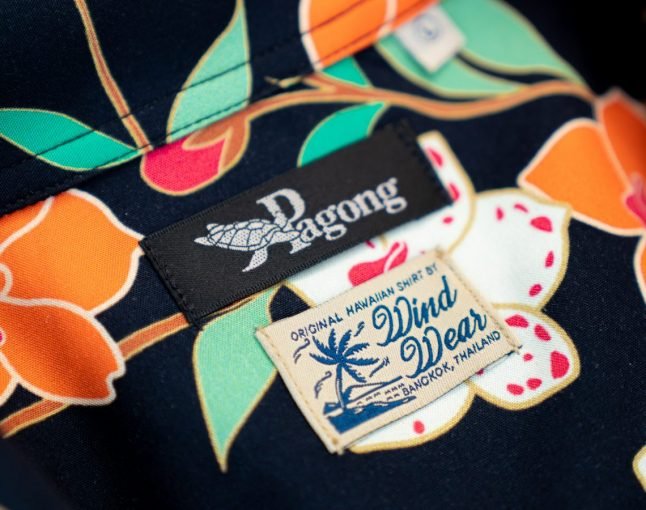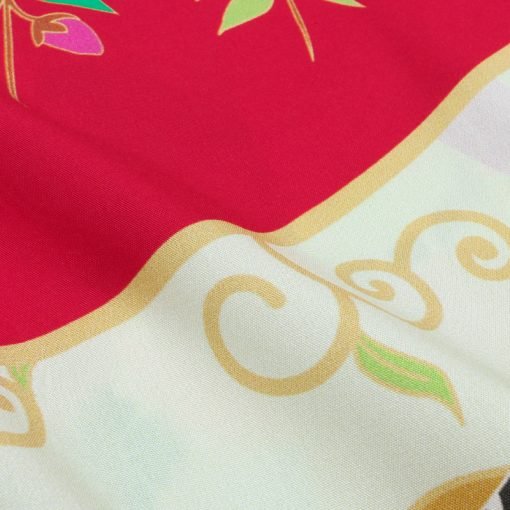
WindWear x Pagong Kyoto
WindWear x Pagong Kyoto
The trigger was a message from WindWear. The content conveyed his passionate desire to collaborate with Pagong. We was curious and looked at WindWear's brand concept, homepage, and social media, and I noticed some similarities with Pagong. There is an aloha shirt that incorporates the traditional festivals of Thailand into the pattern of the aloha shirt, and it was very similar to the way that culture and tradition are incorporated into the aloha shirt. Pagong expresses the beauty of Japanese kimono patterns in aloha shirts, while WindWear uses textiles inspired by Thai festival scenes. It's not just a fashionable aloha shirt for a cultural festival, but an attempt to express and convey the culture and roots of Thailand and Bangkok. I felt an affinity with Pagong there, and decided to collaborate once.
At first, We started with the composition of textile design. After many meetings, we decided to try mixing Japanese and Thai culture. Collaborations between artists are common, but we was excited because we thought that when you mix national cultures together, something like an interesting chemical reaction would occur. We mixed Thai culture based on this design. Based on the pattern of the flame drum, we added an arrangement and changed the phoenix part to an elephant, which is a symbol of peace. We edited the weeping cherry blossom part into an orchid. Elephants have various meanings and are often used in textiles, but one of them is the meaning of “kindness, strength, and courage.” Orchids are most popular in Thailand and represent happiness and love. Available in 3 color variations. The key point in the design is that the elephant, a symbol of peace, is walking on an auspicious pattern that is said to bring good luck.
When the design was decided and production started, we first searched for a factory in Thailand that could do the same pattern dyeing as Pagong. We wanted to use the same method to express the uniqueness of Pagong, but there were almost no silkscreen factories left in Thailand. For this reason, we considered sending the fabric that we dyed in Japan to Thailand, but it was not cost effective and it would be difficult to sell it in Thailand, so we looked for another method. We collaborated on the design, and the fabric was made at an inkjet printing factory in Thailand. Since it was an inkjet printer, it was difficult to get the colors close to the original image. To be honest, We wanted to use silkscreen, but we was particular about the design.We think we came up with a very interesting design.
We didn't have much trouble communicating, and we believe that we were able to create a unique aloha shirt because we were able to empathize with each other's “feelings” that are important to us.
A unique design that shares Japanese and Thai culture.
In fact, We heard that it sold out immediately in Thailand, where it went on sale in advance. It seems that local buyers also bought it right away. It will now reach the customer (as of April 2023).
In Japan, Pagong will be selling it from now on. Eventually, We would like to make aloha shirts using Indian textiles and African ethnic patterns using Japanese dyeing methods. It's an interesting experiment to mix different cultures. By doing so, a new line of textile design will be created. That's fun. We would be happy if this collaboration is accepted by fans and those who will be wearing Pagong items in the future. Collaborations like this are great opportunities, so We would like to continue them. There will be many challenges, but we want to overcome them one by one.
Aiming for an Aloha shirt that becomes a “symbol of peace”.
Thai people are very bright and cheerful. We happy from the beginning to the end. That kind of mindset is very impressive and something we would like to emulate. You truly have a lot of things that Japan lacks. When we were having this meeting about Aloha shirts, the war between Ukraine and Russia was continuing, and the effects of the coronavirus were still being felt, and the world was very dark. That's why I realized once again that “Instead of countries fighting each other, it's better to work together in a bright and fun way and create good things.”
That's why we wanted to create an Aloha shirt that would be a symbol of peace. The world will be a better place when countries cooperate with each other, and we wanted the design of the Aloha shirt to be a symbol of that. Through this collaboration, we would be happy if people could get the message across that Countries should not fight each other, should not fight, and should not take people's lives. Even in different countries and cultures, good things can be achieved by working together.













